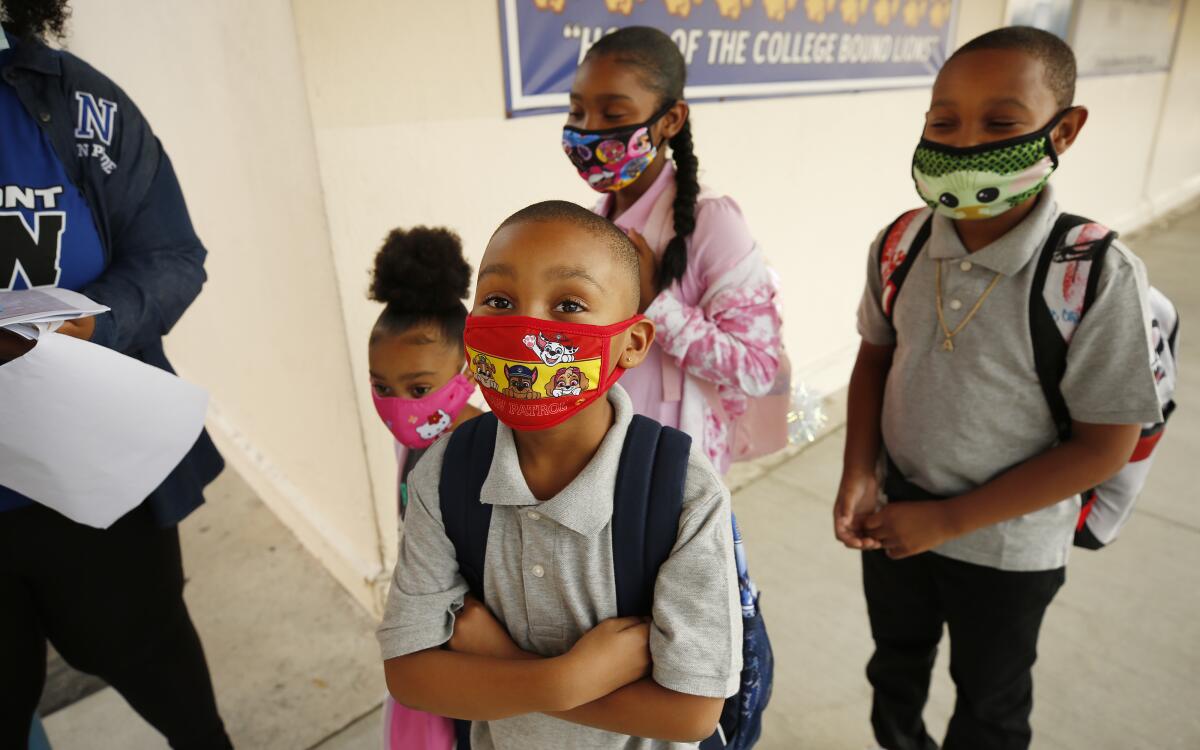Editorial: LAUSD is shrinking. That could be a good thing

After schools closed for the pandemic, and after years of declining birth rates, everyone expected enrollment to drop even further this year in the Los Angeles Unified School District. But no one expected it to be this big a fall — 6%, three times the loss that the district had projected.
About 15 years ago, struggling to fit more than 700,000 students into classrooms, L.A. Unified squeezed them into year-round schools while some teachers lugged their instructional materials from one classroom to the next because they couldn’t get a regular assigned classroom. The district undertook a building program to create new schools, the largest public construction project in the nation.
This year, enrollment dropped toward 400,000 and there’s talk of possibly closing some schools. Many of the reasons are known: birth rates, moves out of the area because of expensive housing, and a pandemic-prompted decline in illegal immigration. The people who move into the district tend to have the money to do so, which often means they’re older or can afford private schools.
But then there are the less well-defined reasons why L.A. Unified students might be disappearing so quickly. Unhappy with remote learning last year, some families took to home-schooling their kids, and found benefits beyond what they’d expected. The number of home-schoolers more than doubled nationwide in the last year, especially among Black parents who had long felt the schools shorted their kids.
When it comes to COVID-19, L.A. Unified has emerged as a national leader in safety. Its new vaccinate and test rule will help protect kids and the community .
Overall, charter enrollment in the state rose last year, though it appears to have dropped in the L.A. area. Still, online charter schools saw a real boost last year because they were more practiced for remote learning; it’s possible many local parents found them a better option for their kids for the long term. Unknown is how many parents might have opted for private schools.
Meanwhile, L.A. Unified reopened campuses too late last school year, and negotiated a deal with the teachers union that gave students too little face time with their instructors.
L.A. Unified officials are wringing their hands, vowing to find ways to bring enrollment figures back on track. That’s been their mantra for years as the district lost students to charter schools. There’s talk of essentially marketing the schools to neighborhoods, pointing out the after-school programs and other services on district campuses.
This seems like the right time to stop that effort. L.A. Unified has been a behemoth, often to the detriment of parents and students. Its unions, especially United Teachers Los Angeles, are too powerful. Despite efforts otherwise, the district is seen by families as remote. And though it has made some major improvements to its instructional programs and teacher training, that came only after charter schools — smaller, more nimble and more responsive — provided serious competition.
Right now, teachers, mental health specialists and nurses needed for the schools are in short supply. So why bother trying to increase the demand?
Teachers and other school staff have to be vaccinated. The situation is a little cloudier for students, but it’s not too early to mandate vaccinations as the FDA approvals roll in.
It’s true that the district will get less money if it has lower enrollment, and that there are certain fixed expenses that don’t go down with the number of students. In addition, without that money, it will have trouble down the line meeting its pension obligations — another statewide problem. But other districts manage with much smaller and declining enrollments, and the district certainly can’t depend on endless growth to meet its retirement responsibilities.
First things it needs to do: Negotiate more realistic pensions in exchange for better salaries up front. Look for more efficient ways to use nurses rather than assume that each campus needs one. Outsource when reasonable. And lobby for permanently higher per-pupil funding that reflects the real cost of running a solid school district for a largely impoverished student population. The state is first starting to recognize what it owes its children, including stable housing, decent medical care and a public education system that isn’t constantly scraping to get by.
If L.A. Unified started planning for a smaller future instead of spending time, energy and money trying to resist it, it could become the more agile educator that parents seek and students need.
More to Read
A cure for the common opinion
Get thought-provoking perspectives with our weekly newsletter.
You may occasionally receive promotional content from the Los Angeles Times.












